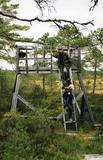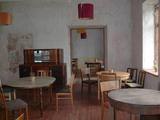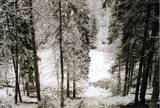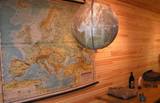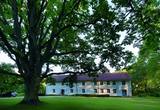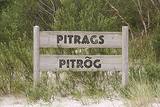| Нo | Название | Описание |
|---|---|---|
|
Atrodas Valmieras Drāmas teātra ēkas rietumu spārnā. Piedāvā latviešu un pasaules virtuvi, svētdienās - brančus. Sadarbojas ar vietējām zemnieku saimniecībām. |
||
|
The distance from Riga to Tallinn is more than 300 km and it takes approx. 5 hours by bus. Therefore we suggest stopping on the way for a brief excursion to a herb farm and lunch in a country pub. This stopover is approx. 1.5 hours’ drive from Riga, just at that point when one needs to stretch one’s legs and enjoy a change of scene. The visit will give an insight in rural life and it may surprise visitors to learn how well Latvians understand nature, knowing and using herbs for food, health and beauty. After the excursion, the group will have lunch in a country pub serving meals made from locally grown ingredients. |
||
|
Aptuveni 2km garā Ķirbižu meža izziņas taka izveidota apļveidā gar Vitrupes abiem krastiem. Visā takas garumā var mācīties atpazīt Latvijas mežu raksturīgākos kokus, krūmus un augus. Šeit var aplūkot arī Vālodzes dižozolu (6.5 m). Upes labajā krastā, pie tā sauktā vīna pagrabiņa un kreisajā krastā apmēram 200 m no takas sākuma pie Meža muzeja, atklājas ainaviski skati uz ieleju un Vitrupi. |
||
|
Kauņas jūras reģionālais parks (Kauno marių regioninis parkas) dibināts 1992. gadā. Tas ietver Nemunas HES uzpludināto posmu – lielāko Lietuvas ūdenskrātuvi no Kauņas līdz Piļonas (Piliuona) ciemam. Viena no nozīmīgākajām parka vērtībām ir ainava, kas veidojusies ilgā cilvēka un dabas mijiedarbībā. Parkā konstatētas 950 augu sugas, 600 dzīvnieku, t.sk. - 34 zivju sugas. Parka nozīmīgas dabas vērtības ir meži, augstie purvi, kadiķu audze. Parkā ir apskatāmi dažādu vēsturisko periodu liecinieki – senču pilskalni, Pažaislis klosteris, Kauņas cietokšņa Piektais forts, kā arī Rumšišķes (Rumšiškės) brīvdabas muzejs – viens no lielākajiem (195 ha) šāda veida muzejiem Eiropā. Vaišvīdavā (Vaišvydava) ir izveidots parka apmeklētāju centrs, parkā ir dabas takas, piemēram, Žiegždriai ģeoloģiskā taka un Dubravos izziņas taka. |
||
|
This restricted area was established to protect a high-type swamp, a swampy forest and a series of rare birds. The Niedrāji-Pilka swamp can be crossed with dry feet while enjoying almost virginal nature. This is possible on the narrow-gauge railroad embankment which runs through the swamp for three to four kilometres from the North-east to the South-west, or on the well-appointed circular wood pathway which is on the eastern size of the embankment.
|
||
|
История мызы началась в 19-ом веке. Сегодня мыза Пыхьяка - место питания, которое использует местные продукты и следует основам национальной кухни, здесь Вам предложат доступные простые и вкусные блюда. Меню каждого дня всегда есть на сайте. Мы рады видеть как проезжающих, так и группы. |
||
|
В орденском замке в Пайде на Валлимяэ основан историко-познавательный центр Wittenstein, где роль машины времени исполняет лифт, который перевозит посетителей из одной эпохи в другую. На разных этажах можно познакомиться с доисторической и орденской, королевской и царской, оккупационной и эстонской эпохами и временем восстановления независимости. В историко-познавательном центре много звуковых и световых эффектов, видео и кино-программ. |
||
|
Found in the northern part of Cesvaine, the church was built of fieldstones in the Neo-Gothic style in 1879 by the architect Paul Max Bertschy. The church was restored in 1929 and again in the early 1990s. The altar painting, “Christ on the Cross” (1923) is by Jēkabs Bīne.
|
||
|
В полувековом бывшем здании «Ламини» художница предлагает занятия по рисованию и живописи - пейзажи и умиротворенная природа в технике масляной живописи. Природная тропа (3 км). |
||
|
This territory in the northern part of the Dzūkija Highlands with lots of hillocks and lakes. The most interesting tourist destination is Velnio duobė (Devil’s Flowerbed) – a funnel-shaped hole that is up to 40 m deep and 200 m wide and is thought to have originated during the Ice Age.
|
||
|
В основанном в 1982-ом году музее можно познакомиться с жизнью и бытом данного региона начиная со второй половины 19-го века до недавнего прошлого. В парках на 17 га музейной территории можно увидеть 200 различных видов деревьев и кустарников. Можно поучаствовать в различных тематических днях- испечь хлеб или познакомиться с датами Эстонского народного календаря. Из музея можно попасть на природную и культурологическую учебную тропу Велизе. |
||
|
A farm engaged in the cultivation and processing of large cranberries. Offers berries, cranberry juice, syrup. On Fridays at Dundaga market from From 7:00 to 11:00 it is also possible to buy products. |
||
|
Находится недалеко от Кулдигской окружной дороги. Деревенский ресторанчик небыстрого обслуживания по принципу слоу-фуд, где блюда готовятся в присутствии клиентов на живом огне (ольховые дрова). Предлагается трапеза в саду. Латышская кухня: Салаты из фасоли, килька с творогом, ячменная каша с копченым мясом, фальшивый гусь, тушеный в сметане судак, треска с луком и помидорами, горшочек с бараниной, луковая отбивная, свиная печень в охотничьем вкусе, тушеные овощи в горшочке, горячий суп с клецками и черникой, латвийские лесные ягоды с взбитыми сливками, карамелизированные в меде яблоки, творожные струмпиши. |
||
|
The only island in Lake Ciecere has a more or less virgin forest of oak, linden and elm. Some of the oaks are huge. This is an important habitat for woodpecker-type birds. The island has not been improved. |
||
|
We recommend that you walk through the town of Kandava not only to enjoy the charm of a small town, but also to find fantastic viewing locations where you can see the town and the shores of the ancient Abava River valley from the Kurši (Ancestor) castle hill, Lielā Street, the Bruņinieki castle hill and Zīļu Street (School Hill), as well as from the area of the Ozolāji open-air stage.
|
||
|
The tree is in the middle of an untended field. Despite many dead branches and the messy surroundings, the tree is beautiful and well visible from the road. It is the third thickest tree in the Baltic States.
|
||
|
The first mention of Pēterupe Rectory goes back to the late 17th century. The Manor Park and the buildings have partially survived to the present day, including a linden alley at the end of Smilšu Street, planted by the pastor Jānis Neilands in 1879 and the grand oak planted by Johann Wilhelm Knierim in 1869. After the fire of 1908, the Rectory was restored and partially rebuilt. In Soviet times, the property was removed from the parish and the house was named “Līgotnes”. During German times the Rectory was occupied by legionnaires. After the war, the building of the Rectory was turned into a hospital, then into a secondary school and later it was transformed into a block of flats for teachers. Now the building again belongs to the parish and it is inhabited by a priest of the parish and his family. |
||
|
В самом сердце Мульгимаа расположена семейная пивоварня, хозяева которой с уважением относятся к местным традициям приготовления еды и напитков. Посетители могут понаблюдать за процессом варки пива, а также попробовать разные сорта пива Mulgi. |
||
|
Atpūtas vieta Braslas upes krastā, kurā pieejamas telts un kemperu vietas. Tiek piedāvātas dažādas izklaides iespējas: laivu noma, meža futbols un meža biljards. Piedāvājumā arī grila noma un malka ugunskuram. Sadarbībā ar kafejnīcu "Zem ozola" tiek nodrošināta ēdināšana, iepriekš par to vienojoties. |
||
|
Впервые упомянут в документах в 1582 году. На мелях Питрагса лежит много затонувших кораблей. В 1826 году в Питрагсе было насчитано 11 дворов и 190 жителей. В 19-ом веке здесь был открыт трактир. В 1937 году в селе находилось 12 старохозяйств и 38 рыбных хозяйств (в основном – новохозяйства). В селе было несколько мест переработки рыбы - куры. В Питрагсе жила великолепная сказительница ливского языка Мария Шалтьяре (Бертольде, 1860 - 1930), которая поделилась более чем 200 сказками и преданиями, более 90 песнями, играми и т. д. Молитвенный дом баптистов в Питрагсе был построен в 1902 году. В Первую мировую войну он сгорел, в 1925 году был восстановлен, а в конце 20-ого века - отремонтирован. В центре Питрагса в доме Крогу хозяин создал коллекцию из 27 образцов старинных ограждений (заборов) ливского берега, предлагает копчение и дегустацию рыбы. |
||







